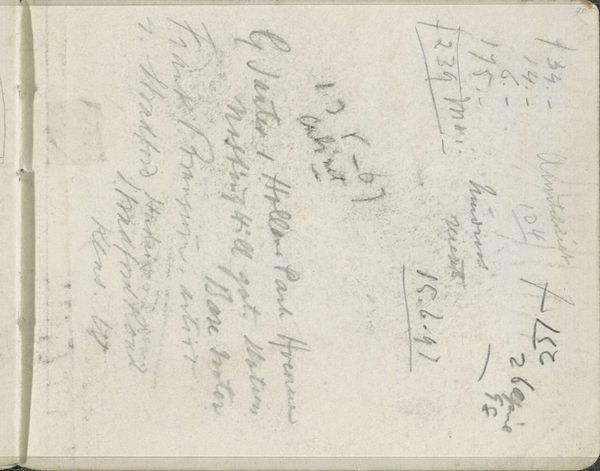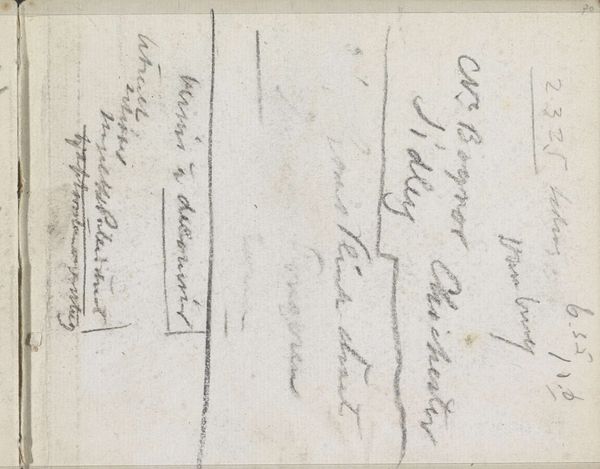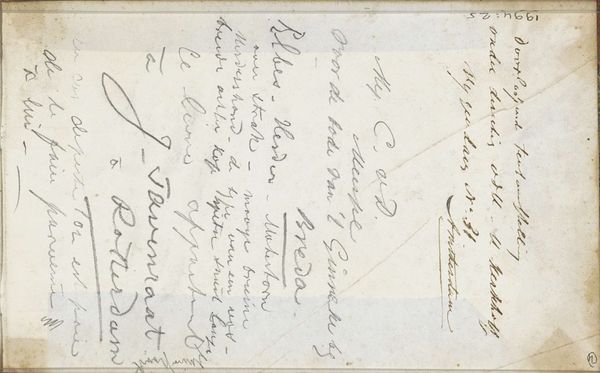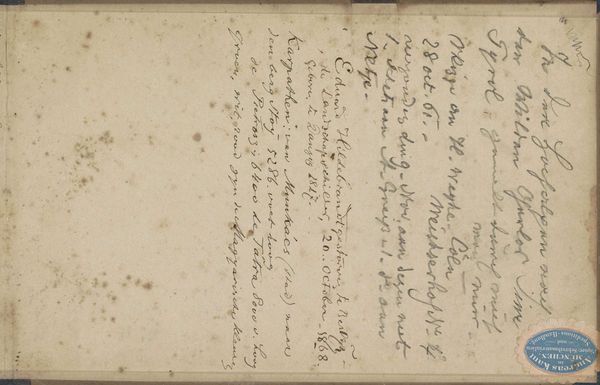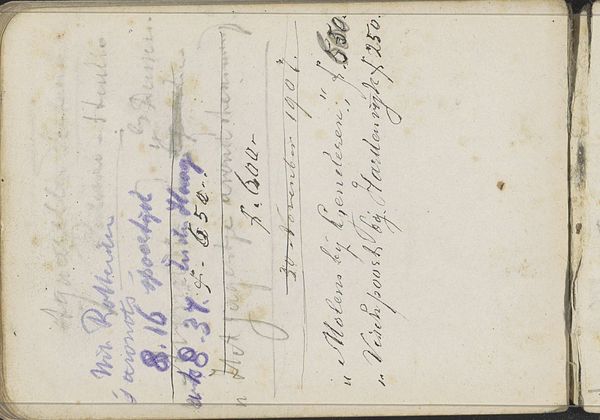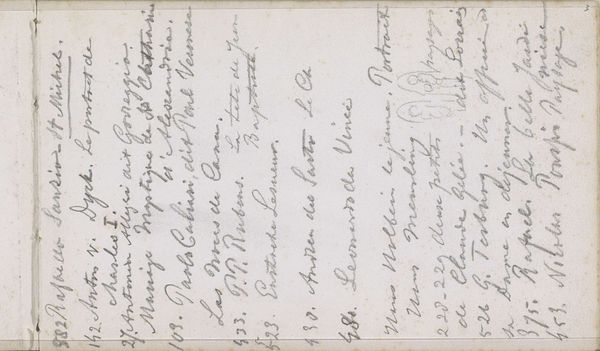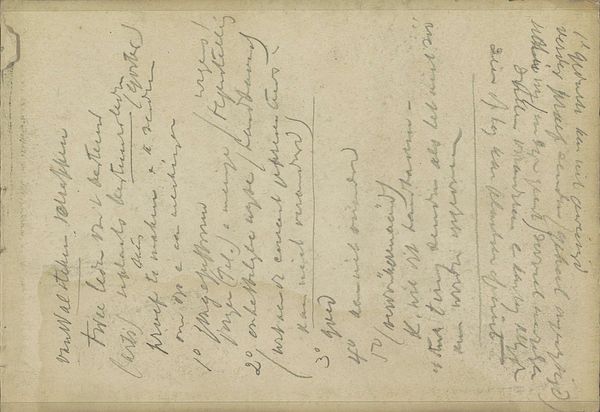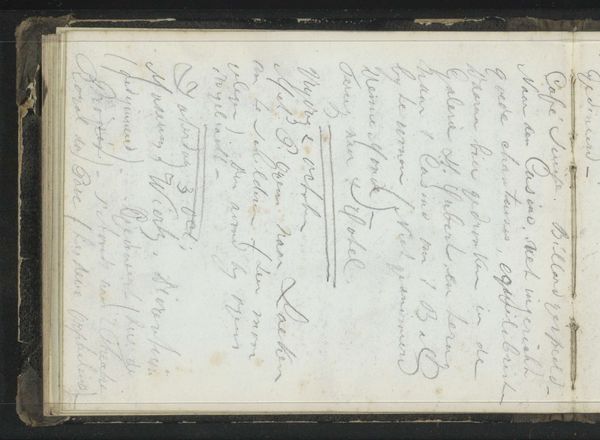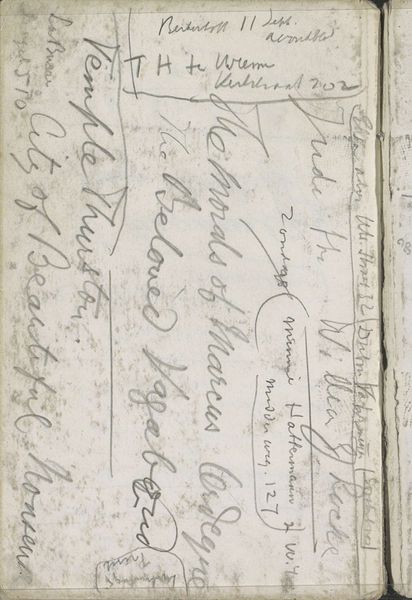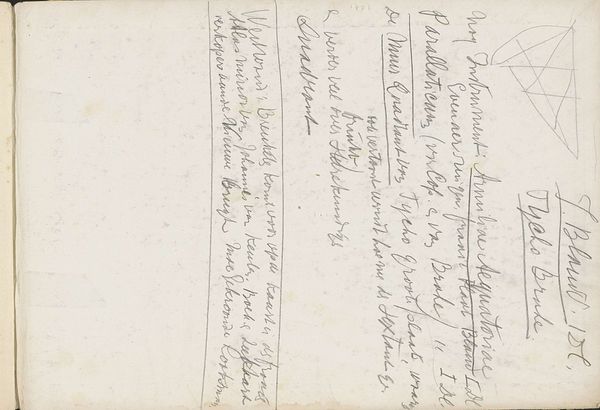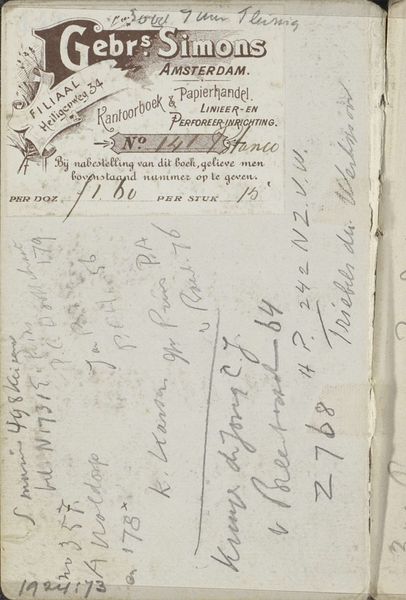
drawing, paper, ink
#
drawing
#
paper
#
ink
#
watercolor
#
calligraphy
Copyright: Rijks Museum: Open Domain
Curator: Before us, we have "Notities" by Willem Cornelis Rip, likely created sometime between 1866 and 1922. It’s a drawing rendered in ink on paper. Editor: My immediate reaction is to the sheer intimacy of it. It's just handwriting, isn't it? Sort of like looking into someone's personal thoughts or lists. A window into the daily production of living, the way paper carries weight with ideas or reminders that hold labor value or the exchange for living in the time. Curator: Absolutely, and situating this within Rip's artistic journey, particularly as a document spanning a transformative period, provides an interesting glimpse into not just individual but broader societal shifts and lived experience during his lifetime. The cost annotations suggest an emerging culture of accounting in how we negotiate material relationships to commodities or exchanges. The other interesting element might be the appearance of place in Zaandam Koog and Zutphen. Editor: The materiality of this piece also tells a story. The ink bleeds into the paper, the very physical act of writing and how that process contributes to meaning. It's a reminder of the hand at work, a direct connection to the maker’s body that shaped the final artifact in an accounting that goes beyond the symbolic and lands squarely on the surface and matter that captures an ephemeral event, turning it into material to be seen now by others. Curator: Precisely. What are these ‘notes’ and what place do they emerge from within a culture and people being exposed to growing industrialization. There is so much one might draw out from how art serves witness. Editor: For me, thinking about how things are made, or how labour contributes meaning in an artwork like this offers new ways of approaching our relationship to material culture. What it means to make or to produce the material around us, particularly as a consumer-producer dynamic that extends through identity, gender, race and politics for both artist and society. Curator: This exploration reminds me of how powerful art is at not only reflecting society, but shaping the values by which culture evolves or resists, and ultimately it is the human capacity for thought and experience that emerges here. Editor: Exactly! This work prompts an intimate questioning of labor, of what an individual must calculate to subsist and to produce when given tools and material—the means by which a body engages and shapes a record for others. It's not just about looking, but about tracing the actions, relations, and social practices embedded within the piece itself.
Comments
No comments
Be the first to comment and join the conversation on the ultimate creative platform.
